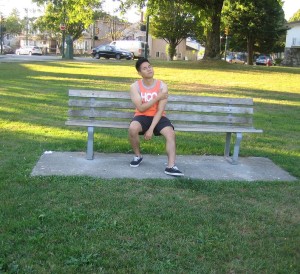Shoulder separation arises if the ligaments supporting the collarbone to the joint where it meets the shoulder blade are torn. Once the ligament is ripped apart, the collarbone might be driven out of its normal position and push up beneath the skin on top of the shoulder.
The injury can occur after sustaining a strike or falling on the shoulder. It can also stem from a fall on an extended arm or hand. It is also a common injury in sports such as rugby, football, lacrosse or hockey.
What are the signs?
The usual indications of shoulder separation include:
- Intense shoulder pain at the time of injury
- Shoulder appears twisted
- Reduced shoulder movement along with tenderness on the upper part of the shoulder at the end of the collarbone
- Swelling and bruising of the shoulder
Intense shoulder pain at the time of injury.
Management of shoulder separation
The treatment for shoulder separation is based on its seriousness. Generally, the individual with the injury must use a sling or immobilizer.
These prevents the individual from lifting the arm far from the chest as well as allow the ligaments to heal. The shoulder should be kept immovable until the individual is free from pain. This is the time when rehabilitation exercises can be started.
In some instances, surgical intervention is required. The arm is placed in a sling for up to 6 weeks to promote healing of the injury until rehabilitation exercises are started.
In some cases of shoulder separation, they recuperate within 2-4 weeks without any loss of shoulder function. Nevertheless, there is minimal rigidity or loss of movement in the shoulder which is only brief. For severe cases, it might take 2 months or longer to heal, especially if fixed with surgery.
There might be a permanent lump over the shoulder joint after sustaining a separation. Take note that the bump will not typically cause other medical issues.
More Information / Disclaimer
The information posted on this page on shoulder separation is for learning purposes only. Learn about the usual causes and how it is treated by taking a standard first aid course with Red Deer First Aid.

